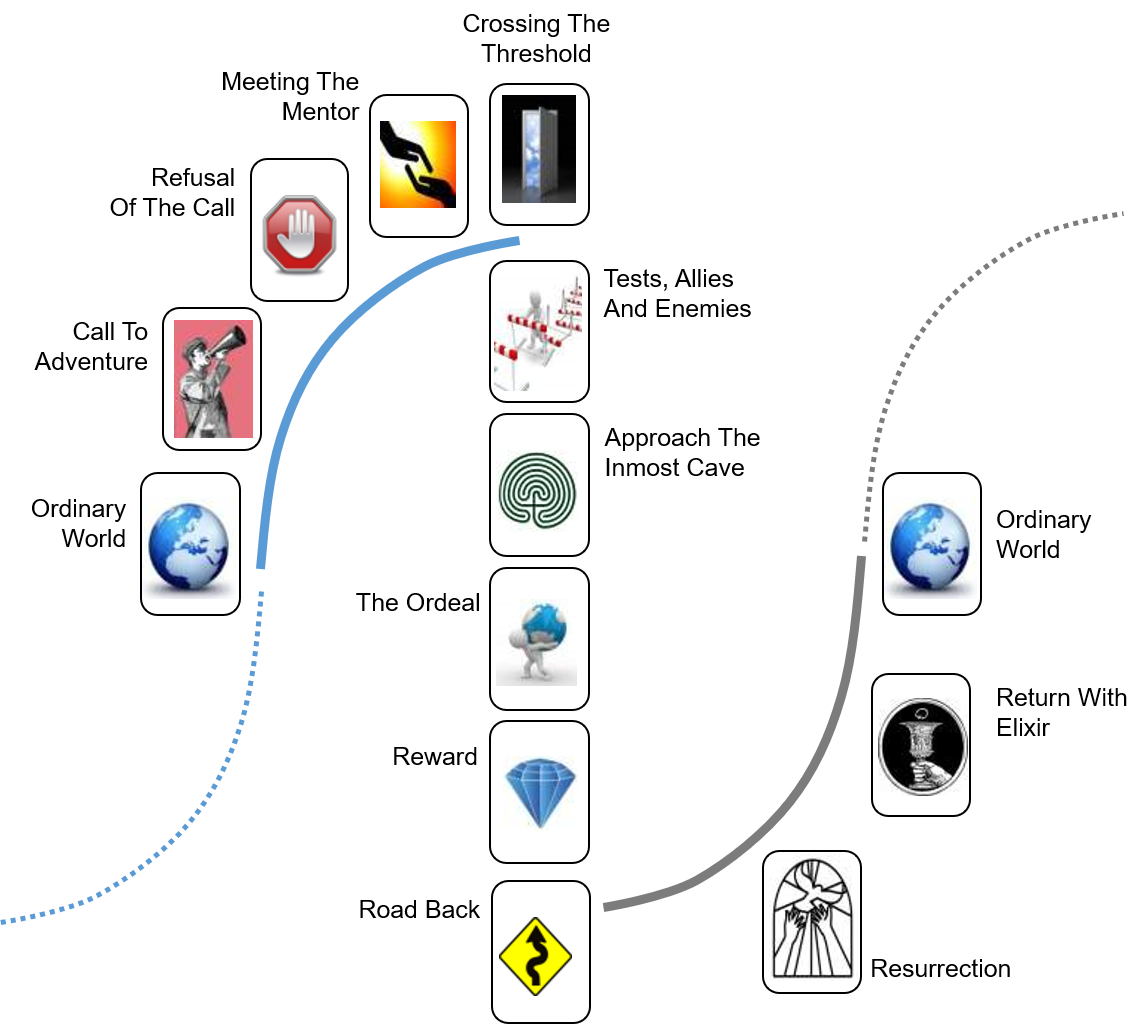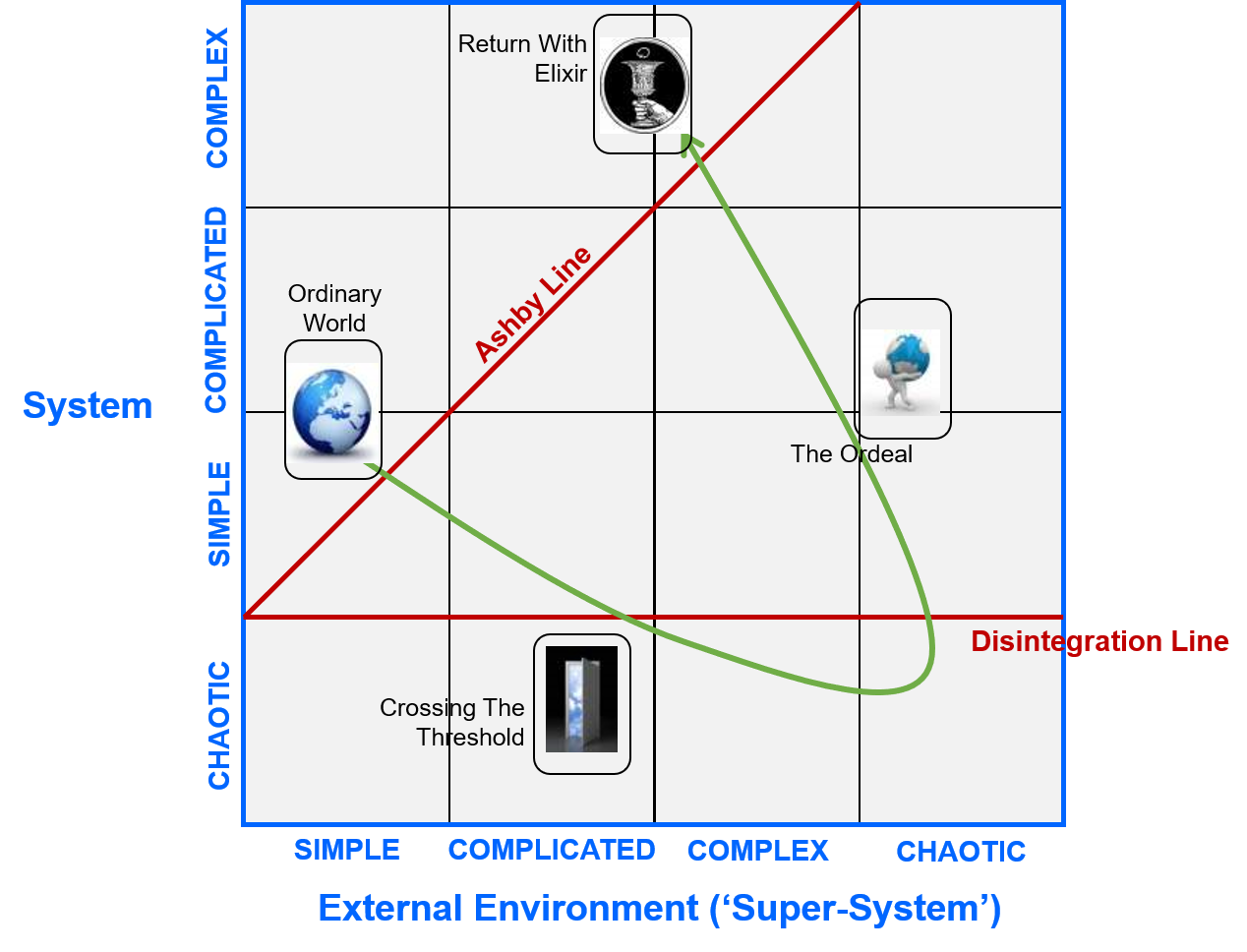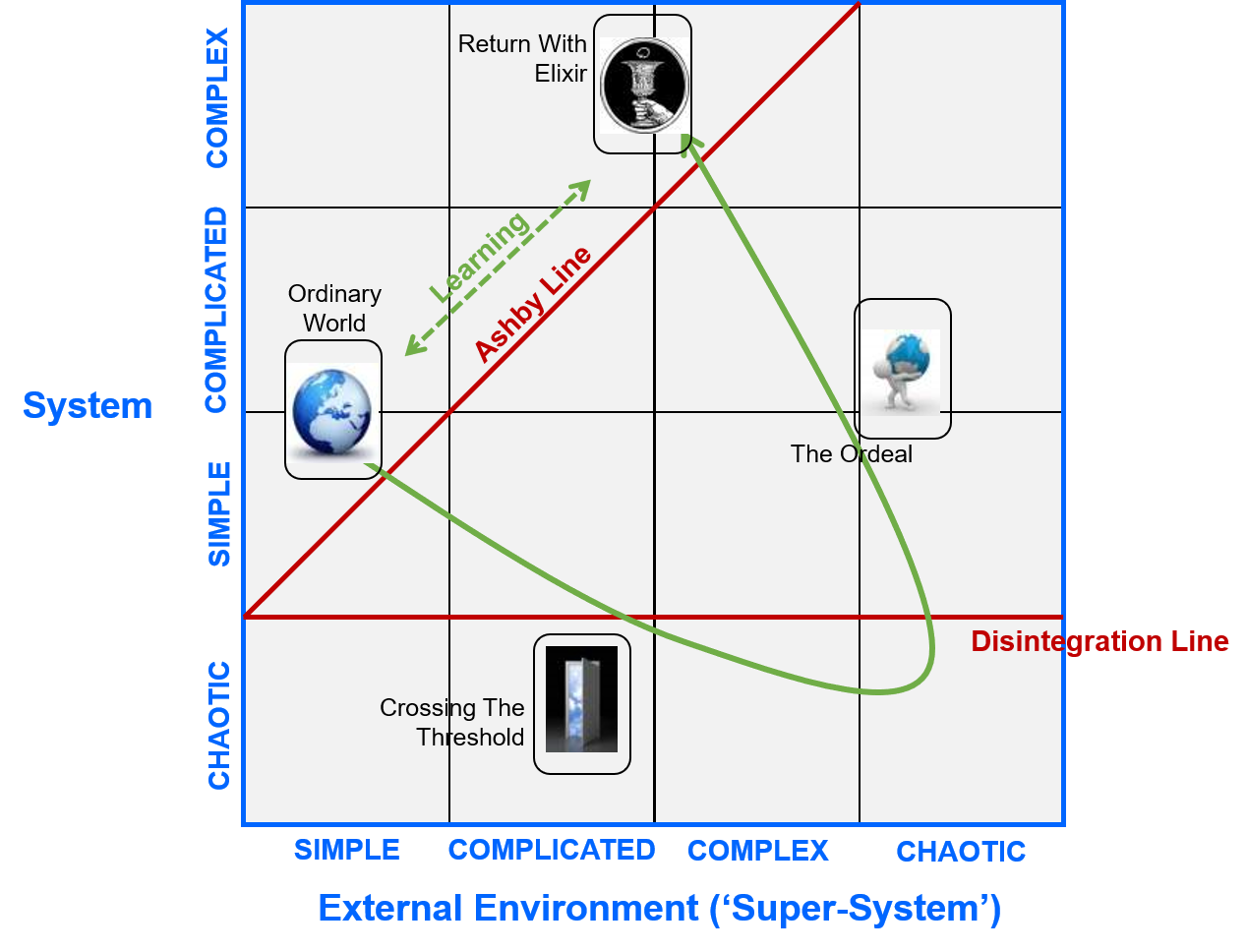
I’ve long been a fan (and user) of Joseph Campbell’s Hero’s Journey. We’re in the discontinuous change business. Which means s-curves. And specifically the jump between s-curves. The Hero’s Journey provides a compelling, stage-by-stage description of what these s-curve jumps look like. I’ve yet to meet an innovator yet that isn’t able to empathise with the model and recognise all of the stages their innovation project passed through.
My new favourite thing is our Complexity Landscape Model (CLM). It was only a matter of time before we sought to try a mash-up with the Hero’s Journey. The results felt important. Here’s where we’re at so far:

Ordinary World – the start of the Hero’s Journey sees the Hero in their ‘normal’, usually calm and ordered world. From a CLM perspective, this equates to where many of us aspire to live our lives – in a stable state in the Simple-Simple zone.
Call To Adventure – something goes wrong. The Hero doesn’t always realise it at the time, but what’s happened is something in their environment changes and that change drops the Hero below the Ashby Line. Resilience and stability are no more.
Crossing The Threshold – after initially refusing the Call (a thwarted attempt to get back above the Ashby Line), and receiving the wise words of the Mentor, the Hero crosses the Threshold into Campbell’s ‘Special World’. For the Hero, this means that they have entered Chaos. They know they have to jump off the metaphorical cliff, but they also have little if any idea what’s coming next, or what they’re going to do about it.
Tests, Allies & Enemies – here are usually the most exciting parts of the Journey, certainly if it is a Hollywood movie manifestation of the Journey. Not only is the Hero’s ‘system’ in chaos, but so now is their surrounding environment.
The Ordeal – Chaos is a very unstable state and because of this it tends not to prevail for very long. Sooner or later, the Hero’s David-versus-Goliath contradiction emerges from the mess. The environmental chaos subsides and some kind of complex order appears.
The Reward – if the contradiction is to be solved, the Hero’s ‘system’ needs to become increasingly smarter. Solving contradictions demands at least a Complicated-capable means of taking on the world, and quite possibly a Complex one.
The Road Back – the Hero’s way of dealing with the situation increasingly comes to match the level of complexity of their surroundings. When the Hero enters the Complex-Complex zone, its possible to leave the Special World and enter ‘Ordinary World’ of the new s-curve.
Return With Elixir – somewhere on the road back, a death and resurrection is required. This may be the Hero, or, more usually it is redundant knowledge. Only after this has happened can the Hero cross the Ashby Line and claim the Elixir.

Crucially, at the end of the story, the Hero (and by proxy, the audience) is supposed to have learned something. This learning is symbolised by the fact that the end position on the Complexity Landscape is usually higher up than the position at the start of the Journey. This is the case even in Hero’s Journeys that fall into the Tragedy category. Tragedies, Rags-To-Riches, Icarus, Man-In-A-Hole or Oedipus stories in fact all follow the same basic trajectory. I expect I’ll be intrigued enough to go and explore the subtle differences between each of these various different story types in future posts. Probably in the context of studying specific books or films. Spending my afternoons watching movies… sounds like my favourite kind of research…
